· 8 min read
Your agrofuture depends on soil health and long-term nature-based approaches, rather than daily artificial intervention.
With this post, you will know:
- What PPFM strains are
- What can PPFMs do for your crops
- What emerged from field trials of PPFMs
The combination of the use of beneficial and environmentally friendly microorganisms for agricultural production such as P solubilizers and N fixers together with inorganic fertilizers is an increasingly important line of research aimed at developing microbial formulations that enhance the benefits of mineral inputs reducing negative effects on the environment. Since most agricultural systems are N- and P-limited, this novel approach is likely to be of global interest. - FAO, 2022
PPFMs obtained after leaf impression

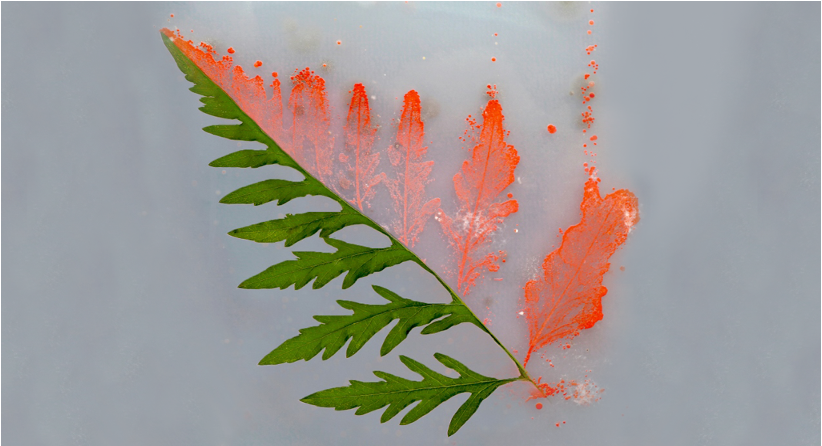
Pink-pigmented facultative methylotrophic bacteria (PPFMs) are a unique group of microorganisms that can play significant roles in agriculture. These bacteria are characterized by their pinkish coloration, the result of a pigment called carotenoid1.
Their presence has been documented on roots, leaves and stems of rice, root nodules of crotalaria, South African legumes, stem nodules of Sesbania legume, soil, soybean, vegetables, pumpkins, seeds of rice, brassica, river bushwillow, potato, banana, palm oil tree, siam squash, corn and on. Such vast presence and the related evidence helped gain insights into the distribution of PPFMs in nature, especially on plants.
Beneficial communication could be considered the best model for the symbiotic association between plants and PPFM microbes. Host plants release metabolic by-products including carbon sources majorly in a form usable by associated Methylobacteri. In turn, bacteria offer phytohormones, stabilize nutrients, provide biocontrol and even increase stress resistance. Such mutually beneficial relation generally indicates the chance of co-evolution of symbiotic bacterial partner: PPFM bacterias have been part of crop existence for a long time2.
Among PPFM bacterias, Methylobacterium extorquens E391 and Bacillus Velez M175 are rare functional strains screened through unique culture-to-product patented technologies and have powerful growth-promoting functions and excellent bio-control functions. The two-strain collaboration provides double protection for crops.
Example of culture-to-product process
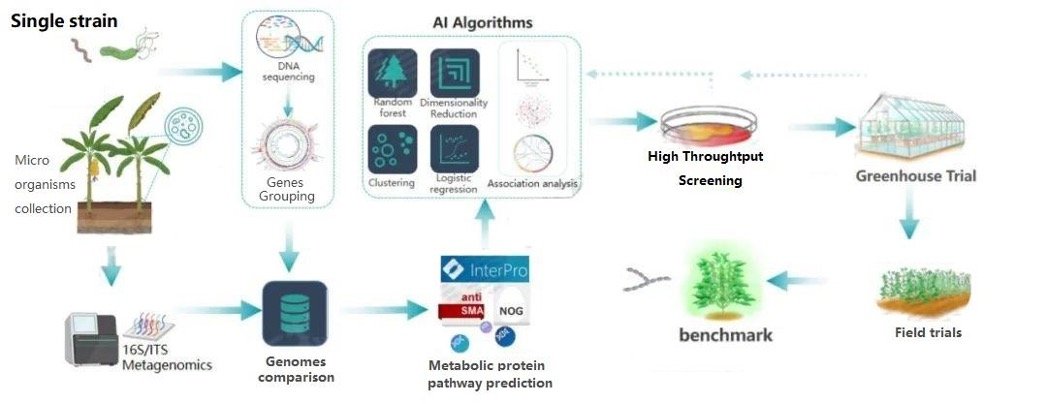
Credits: NaturnovaTM)
Different from Bacillus strains that can be mass-cultured and produced only by using conventional fermentation substrates, PPFM series strains are bacteria with outstanding characteristics such as "thin cell walls, difficult cultivation, and difficult fermentation", so their industrialization requires experienced production. Fermentation engineers often need exclusive mediums for PPFM, adding special strain activating factors.
When used in agriculture, PPFMs are recognized for their remarkable beneficial effects on plants: They promote growth and health through several mechanisms.
1. Phytohormones production: PPFMs and especially PPFM E391 can synthesize and release plant growth-promoting hormones like auxins, cytokinins, and gibberellins. By secreting helpful acids as indole acetic acid and cytokinin, these hormones stimulate cell division or plant elongation and therefore promote the formation of different kinds of roots needed by crops, regulating and improving plant development3.
Hormones interaction
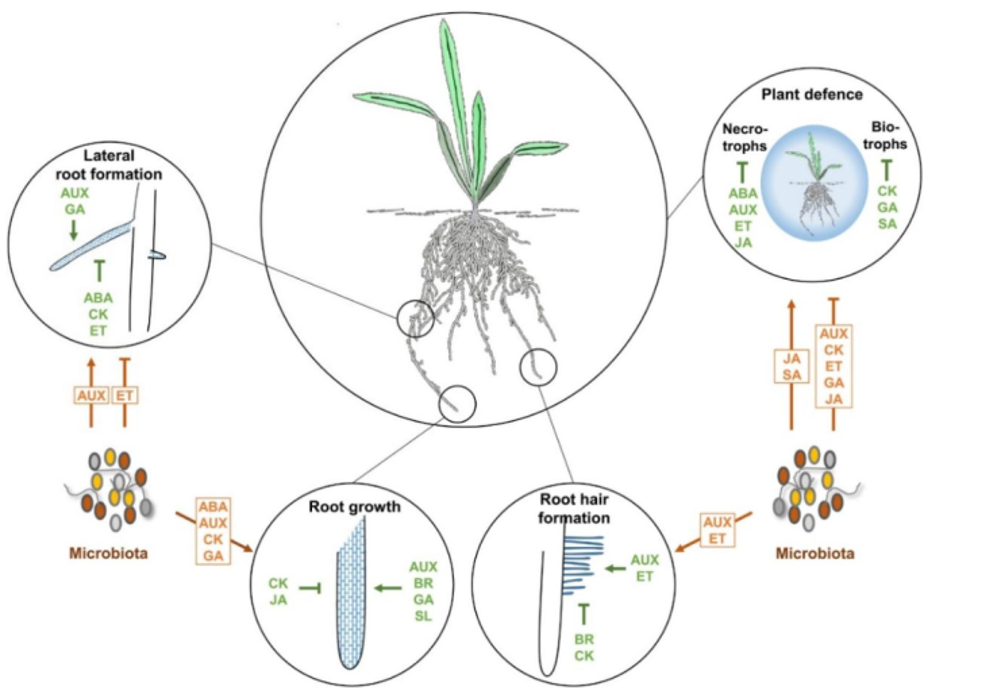
Credits: NaturnovaT
2. Nutrient Solubilization: PPFMs possess the ability to solubilize essential nutrients such as phosphorus and iron from the soil. They do so by producing substances able to dissolve iron elements in the soil and release iron ions that can be absorbed by crop roots. This promotes the synthesis of chlorophyll and enhances crop nutrition. PPFMs can significantly enhance crop metabolism and improve crop quality by secreting numerous amino acids. This enhances the availability of nutrients to plants, and promotes better growth and overall nutritional status4.
3. Biocontrol Properties: Some PPFMs exhibit antagonistic activity against plant pathogens. By producing antimicrobial compounds, competing for resources against pathogens and adjusting the soil microenvironment, they help protect plants from harmful diseases.
Recruiting Beneficial Bacteria: Curbing the Growth of Pathogenic Bacteria

Credits: NaturnovaTM – PPFMs from Second Spring
PPFM and especially M175 makes Antibacterial peptides, amino acids with properties of inhibition and dissolution of pathogenic bacteria
Analysis of the substances produced by Bacillus Velezensis M175 found that it can produce a variety of antibacterial agents such as Fengycin, siderophore antibiotics, surfactants, polyketides, and antibacterial dipeptide lactobacillus, thereby helping crops resist fungal and bacterial disease infections5.
4. Stress Tolerance: PPFMs can enhance a plant's tolerance to various environmental stresses, including drought, salinity, and heavy metal toxicity. They do this by producing protective compounds and enhancing the plant's stress response. When PPFMs such as Bacillus Velez M175 colonize the root system of crops, they will secrete a large amount of extracellular very dense biofilm, thereby effectively isolating the root system from contact with pathogenic bacteria.
Biofilm Formation: Sequestering Pathogenic Bacteria
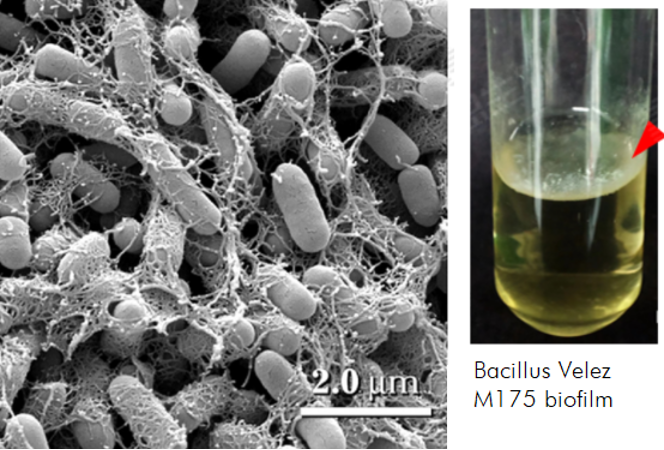
Credits: Naturnova TM
5. Nitrogen Fixation: Not all PPFMs can take nitrogen from the air and turn it into a form that plants can use, like some other bacteria can (such as rhizobia). However, some PPFMs, like strain E391, can help plants use nitrogen fertilizer more effectively. They do this by increasing the activity of urease, an enzyme that breaks down urea into a form that plants can absorb. This can reduce the amount of synthetic nitrogen fertilizer that plants need, which is good for the environment6.
What emerged from field trials of PPFMs
PPFMs are proven not only to promote root growth, increase crop nutrition, maintain beneficial flora of crop roots and prevent soil-borne diseases, but also to bring more unexpected benefits —they can help crops decrease salinity damage and increase resistance to low temperatures.
Under deleterious salinity stress, salty soil can delay or prevent seeds from sprouting. It can also inhibit the growth and development of roots, stems, leaves, flowers, fruits, and other organs. This can lead to nutrient loss and interfere with normal crop growth. In response to salty soil, plants voluntarily stop growing and focus on defending themselves. They do this by changing the way they handle ions, increasing the pressure inside their cells, and making more molecules that protect them from damage7 8.
In a 12-day irrigation trial with PPFMs, where after the third day NaCl solutions were added once every 3 days (in total 4 times), cucumber seedlings underwent analysis. Research showed that under the stress of a high salt concentration of 200mM NaCl, PPFMs can increase the dry weight of crops by 19.19%, effectively helping crops resist salt stress.
NaturnovaTM trial against salinity, Guangdong province 2022
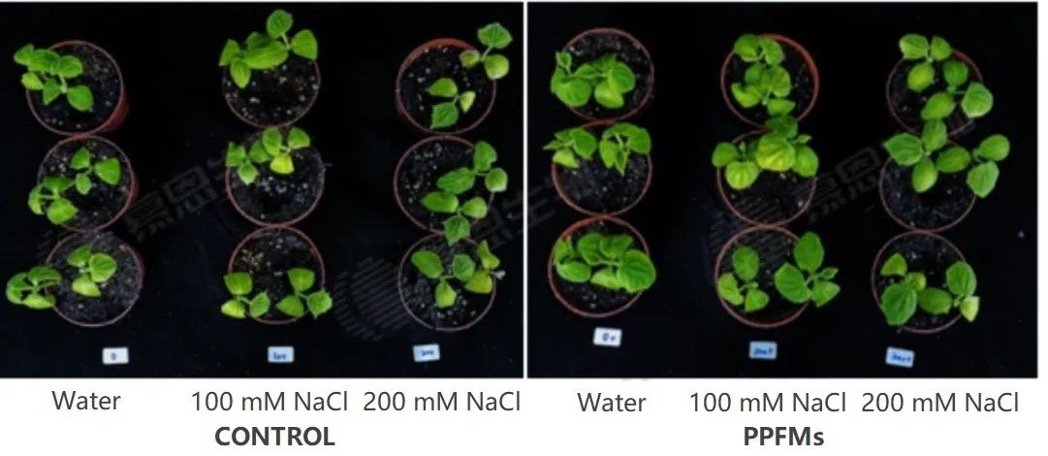
PPFMs also proved their effect on resisting low-temperature stress. When a plant freezes, it will start self-protection, as its cells may burst and die. The roots intake sugar, salt and anti-freezing proteins to change their fat composition and thus keep them from freezing. Water moves from within each plant cell into the intercellular spaces to protect cells from freezing too: ice crystals form in the interstitial spaces but not within the cells themselves9.
In another trial of 12 days of irrigation with PPFMS, seedlings after the 7th day were exposed to different temperatures (Day/Night: UTC 25/22°C, low temperature 15/10°C), and after 14 days of cultivation collected for analysis. Research found that after using PPFMs, the biomass of cucumber seedlings under 15/10°C can still increase by 10.96% compared with control groups, as the storage capacity of organic nutrients is less influenced.
NaturnovaTM trial against low temperatures, Guangdong province 2022
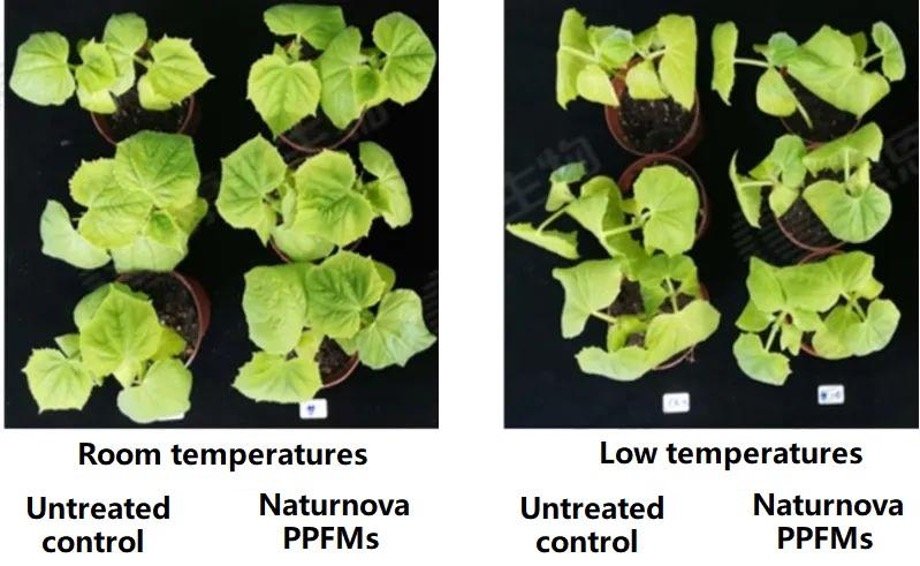
Farmers and researchers have been recently exploring the application of PPFMs as biofertilizers and biopesticides to promote sustainable agriculture. By harnessing the beneficial interactions between PPFMs and plants, farmers can significantly reduce the use of chemical inputs, improve crop yields, and maintain soil health in a more environmentally friendly manner.
It's important to note that research in this field is ongoing, and the specific strains and application methods of PPFMs may vary depending on crop types, soil conditions, and regional factors. Nevertheless, the potential of these pink-pigmented bacteria in agriculture holds promise for a more complete, balanced and productive farming approach where artificial intervention is less and less required, paving the way for a natural future.
The future is natural!
References
2. Nysanth NS, Rajan SA, Sivapriya SL, Anith KN. Pink Pigmented Facultative Methylotrophs (PPFMs): Potential Bioinoculants for Sustainable Crop Production. J Pure Appl Microbiol. 2023;17(2):660-681. doi: 10.22207/JPAM.17.2.17
3. Dodd, I.C., Zinovkina, N.Y., Safronova, V.I. and Belimov, A.A. (2010), Rhizobacterial mediation of plant hormone status. Annals of Applied Biology, 157: 361-379. https://doi.org/10.1111/j.1744-7348.2010.00439.x
4. Bajpai A, Mahawar H, Dubey G, Atoliya N, Parmar R, Devi MH, Kollah B, Mohanty SR. Prospect of pink pigmented facultative methylotrophs in mitigating abiotic stress and climate change. J Basic Microbiol. 2022 Aug;62(8):889-899. doi: 10.1002/jobm.202200087. Epub 2022 Mar 29. PMID: 35349170.
5. Baharudin MMA, Ngalimat MS, Mohd Shariff F, Balia Yusof ZN, Karim M, Baharum SN, Sabri S. Antimicrobial activities of Bacillus velezensis strains isolated from stingless bee products against methicillin-resistant Staphylococcus aureus. PLoS One. 2021 May 11;16(5):e0251514. doi: 10.1371/journal.pone.0251514. PMID: 33974665; PMCID: PMC8112681.
6. Ting Yang , Fachao Shi , Yuxing An, Donglei Sun, Yinglin Lu, Isolation of a pink-pigmented facultative methylotrophic bacteria and its growth-promoting effect on pepper plants, CURRENT SCIENCE, VOL. 123, NO. 2, 25 JULY 2022
7. Balasubramaniam, T.; Shen, G.; Esmaeili, N.; Zhang, H. Plants’ Response Mechanisms to Salinity Stress. Plants 2023, 12, 2253. https://doi.org/10.3390/plants12122253






